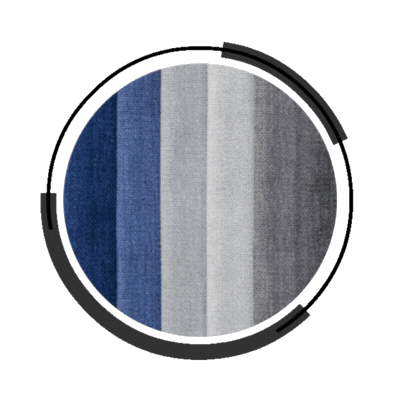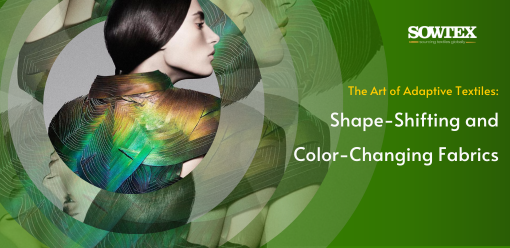


Adaptive
textiles, also known as smart textiles, are intelligent fabrics engineered to
respond and adapt to environmental changes. Initially developed for the fitness
industry due to high demand, these textiles have evolved to address challenges
faced by athletes and individuals with high mobility. This article explores how
innovation and disruption in the textile industry are revolutionizing clothing
by enabling real-time adaptability.
Types and Technologies Behind Adaptive Textiles
Thermochromatic and Photochromatic Textiles
Thermochromatic
textiles change color in response to temperature fluctuations and are often
used in marine research to signal temperature changes underwater. Photochromatic
textiles, on the other hand, react to light, especially UV rays, and are widely
used in fashion, art, and design.
The
technology behind these textiles involves thermochromic pigments undergoing
molecular rearrangement to produce color changes. These pigments are
encapsulated at the micro-level and mixed with a polymer matrix to achieve
functionality.
Hydrochromic and Hydro-Responsive Textiles
These
textiles transform color and patterns when exposed to water or moisture and are
commonly used in swimwear or humidity indicators.
The
technology involves hydrochromic compounds turning transparent when wet,
revealing the fabric beneath. These compounds alter their refractive index in
response to moisture, causing optical changes.
Shape Memory Textiles
Shape
memory textiles change shape when exposed to stimuli like heat, conforming to
the body for both functional and aesthetic purposes.
These
textiles are made from polymers or alloys like Nitinol with shape-memory
properties. Such materials are designed to "remember" predefined
shapes and revert to them when stimuli are applied.
Electroluminescent Textiles
Electroluminescent
textiles emit light using light-emitting elements and are ideal for illuminated
clothing and signage.
The
technology uses phosphors or organic compounds that emit light when excited by
electric waves. The textiles are treated for adhesion, and conductive layers
are applied via screen printing or spraying to achieve functionality.
Conductive Textiles
Conductive
textiles enable the conduction of electricity, allowing sensors, LEDs, or other
electronics to be integrated into fabrics.
The
technology involves conductive fibers or coatings, such as steel or
silver-coated nylon, which are woven or printed into textiles. Threads made
from conductive materials are stitched using traditional methods to create
pathways for electricity.
Pressure-Sensitive Textiles
These
textiles alter their properties in response to pressure and find applications
in healthcare, sportswear, and sensing technology.
The
technology uses conductive polymers or piezoelectric fibers that change
conductivity or generate electrical signals under pressure, providing real-time
insights, such as muscle engagement during sports activities.
A Global Demand for Intuitive Textiles
Adaptive
textiles aim to create an intuitive clothing experience that balances
aesthetics, functionality, and cost-effectiveness. Designers and customers
worldwide are increasingly drawn to textiles that respond dynamically to
real-time needs and environmental changes.
Sowtex: Driving Innovation in Adaptive Textiles
Sowtex
invites fabric manufacturers specializing in innovative technologies to
participate in the TSM’23 - Jaipur. This 8th Edition
Buyer-Seller Meet focuses on showcasing advancements in textile innovation and
sourcing, paving the way for the commercial production of adaptive textiles.
Please reach out
this https://sowtex.com
